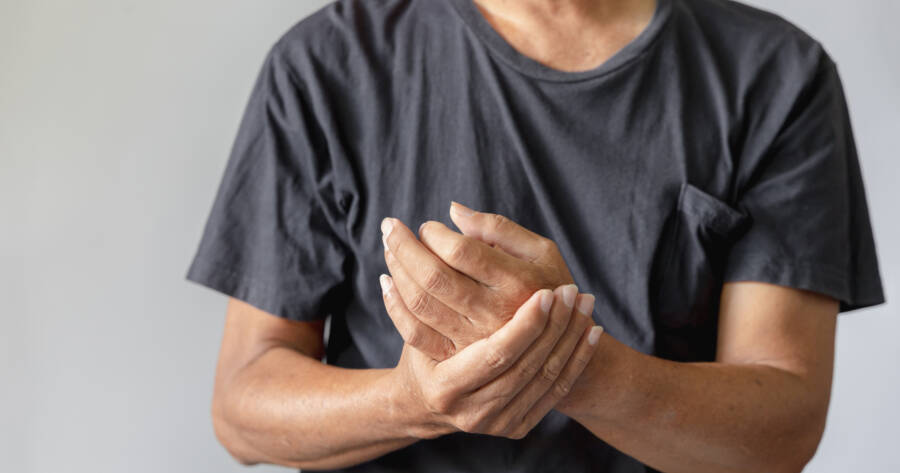Early detection and diagnosis of psoriatic arthritis is crucial for preventing permanent joint damage and other complications. Learn about the first signs of PsA, and what treatments are available to manage symptoms and slow down the progression of the disease.
Identifying the First Signs of Psoriatic Arthritis
Psoriatic arthritis, a condition that affects some individuals with psoriasis, can manifest in various ways. One of the first signs may be joint pain or stiffness, making it difficult to perform daily activities.1
Another possible symptom of psoriatic arthritis is swelling in the fingers or toes, a condition known as dactylitis, which can lead to discomfort, pain, and limited mobility. This swelling often causes the affected digits to appear “sausage-like” and may interfere with daily tasks. However, these are just a few examples of the potential indicators of psoriatic arthritis, as the disease can manifest in various ways, including joint pain, stiffness, and skin changes. It’s essential to learn more about the condition, stay vigilant, and consult a healthcare provider to understand which symptoms are affecting you and how best to manage them.
The Dangers of Leaving Psoriatic Arthritis Untreated
Leaving psoriatic arthritis untreated can lead to worsening symptoms and potentially irreversible joint damage.2 Over time, the inflammation can cause joint deformities, restricted mobility, and chronic pain, impacting daily activities and overall quality of life.
Additionally, untreated psoriatic arthritis may lead to a higher risk of developing other complications, such as cardiovascular disease, diabetes, and mood disorders like anxiety or depression. The inflammation associated with psoriatic arthritis can affect the entire body, increasing the risk of these conditions. Seeking early diagnosis and appropriate treatment is crucial to not only prevent the progression of joint damage and disability but also to mitigate these potential long-term health complications. Proper management through medication, lifestyle changes, and regular medical monitoring can help control symptoms and reduce the overall impact of the disease on a person’s quality of life.
Psoriatic Arthritis Treatment Options
When it comes to treating psoriatic arthritis, there are several options available to help manage the symptoms.3 One approach might involve the use of nonsteroidal anti-inflammatory drugs (NSAIDs) to alleviate pain and reduce inflammation.
Additionally, disease-modifying antirheumatic drugs (DMARDs) may be prescribed to slow the progression of psoriatic arthritis by targeting the underlying inflammation that causes joint damage. These medications can help prevent long-term joint destruction and reduce symptoms over time. Common DMARDs include methotrexate, sulfasalazine, and leflunomide, which work by suppressing the immune system’s overactive response. In more severe cases, biologic therapies—a newer class of DMARDs—may be used to block specific pathways in the immune system that contribute to inflammation. These examples are just a starting point for understanding the variety of treatment strategies available. Collaborating with your healthcare provider to tailor a treatment plan based on your specific condition is key to managing psoriatic arthritis effectively.
Learn More About Psoriatic Arthritis
Psoriatic arthritis is a complex condition that affects individuals differently. Learning more will provide a better understanding of this disease. By taking proactive measures to manage symptoms and prevent joint damage, you can lead a fulfilling and active life.
